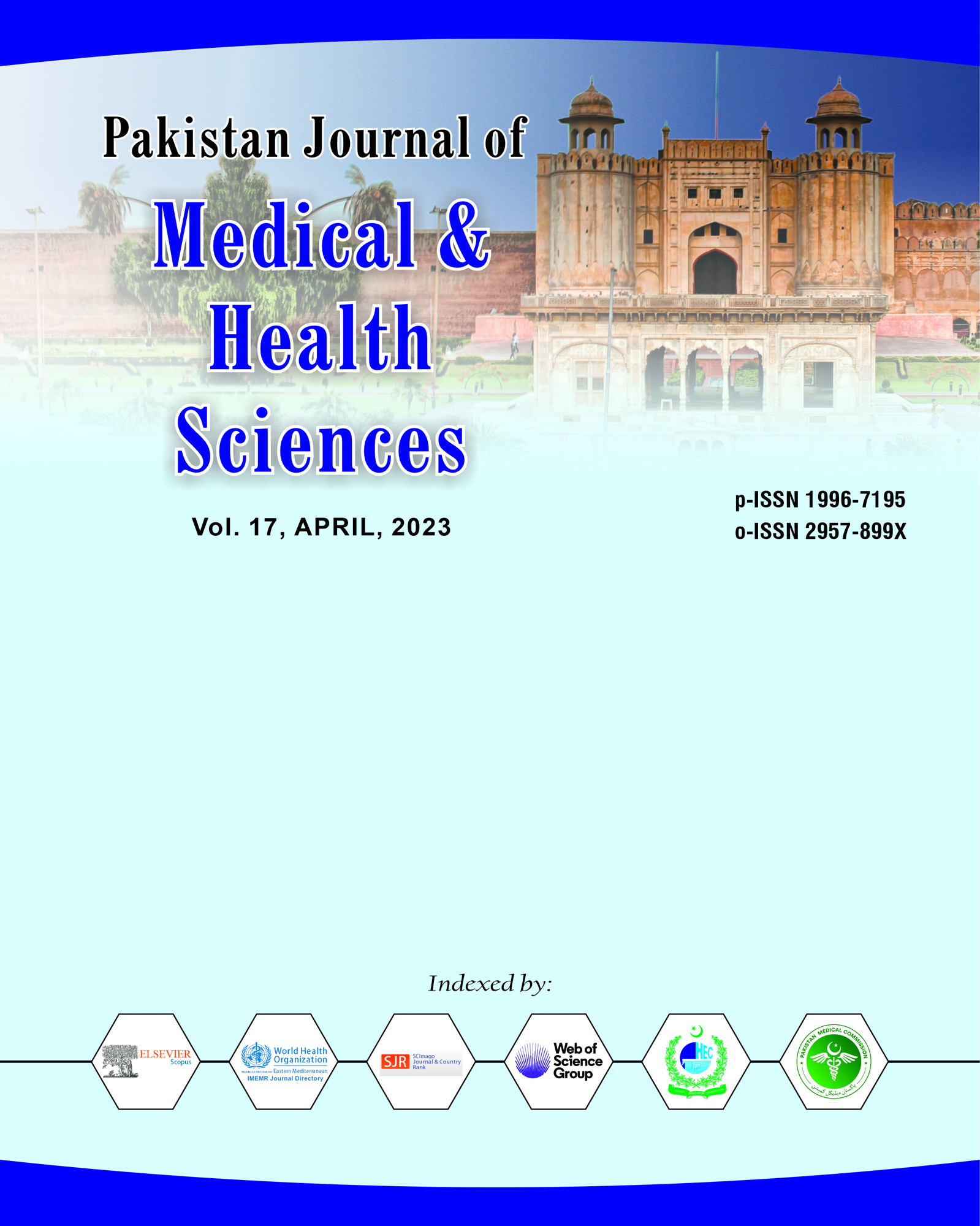MRI-Based Characterization of Uterine Fibroids and their Impact on Fertility and Treatment Outcomes in Pakistani Women: A Cross-Sectional Study
DOI:
https://doi.org/10.53350/pjmhs2023174742Abstract
Background: Uterine fibroids are common benign tumors that adversely affect reproductive outcomes. Magnetic resonance imaging (MRI) is evaluated for its ability to characterize fibroid features and predict fertility outcomes in Pakistani women.
Methods: Seventy women aged 20–45 years were enrolled in this cross-sectional study, n=35 normal control group and 35 patients with diagnosed uterine fibroids. In all participants, pelvic MRI was performed with a 1.5 T scanner using T1w, T2w, and contrast-enhanced sequences. The fibroid characteristics – maximum diameter, number, anatomic location (submucosal, intramural, or subserosal) – were meticulously documented. Structured interviews and medical records were collected to obtain clinical and reproductive data. Student’s t-test and chi-square tests were used to do group comparisons, and a multivariate logistic regression model was used to determine the independent effects of the MRI parameters on fertility outcomes.
Results: The mean time to conception was 12 months for the fibroid group vs. 8 months for controls (p < 0.05), and the fibroid group had a significantly higher infertility rate (42.9% vs. 14.3%; p < 0.05). Multivariate analysis showed that for each 1 cm increase in fibroid diameter, the odds of conception were also reduced by 25% (aOR 0.75, 95% CI 0.60–0.90; p = 0.004), and submucosal fibroids significantly reduced the likelihood of conception (aOR 0.50, 95% CI 0.30–0.85; p = 0.02).
Conclusions: MRI-based evaluation gives an understanding of fibroid characteristics that affect fertility. Clinical decision-making and reproductive outcomes may be improved in women with fibroid-related infertility with the aid of detailed imaging.
Keywords: Uterine fibroids, MRI, infertility, submucosal, cross-sectional study, Pakistani women, reproductive outcomes.
Downloads
How to Cite
Issue
Section
License
Copyright (c) 2023 Sadaf Gill, Saba Aslam, Sara Gill, Aisha Masood, Saba Masud, Binish Zaidi

This work is licensed under a Creative Commons Attribution 4.0 International License.


